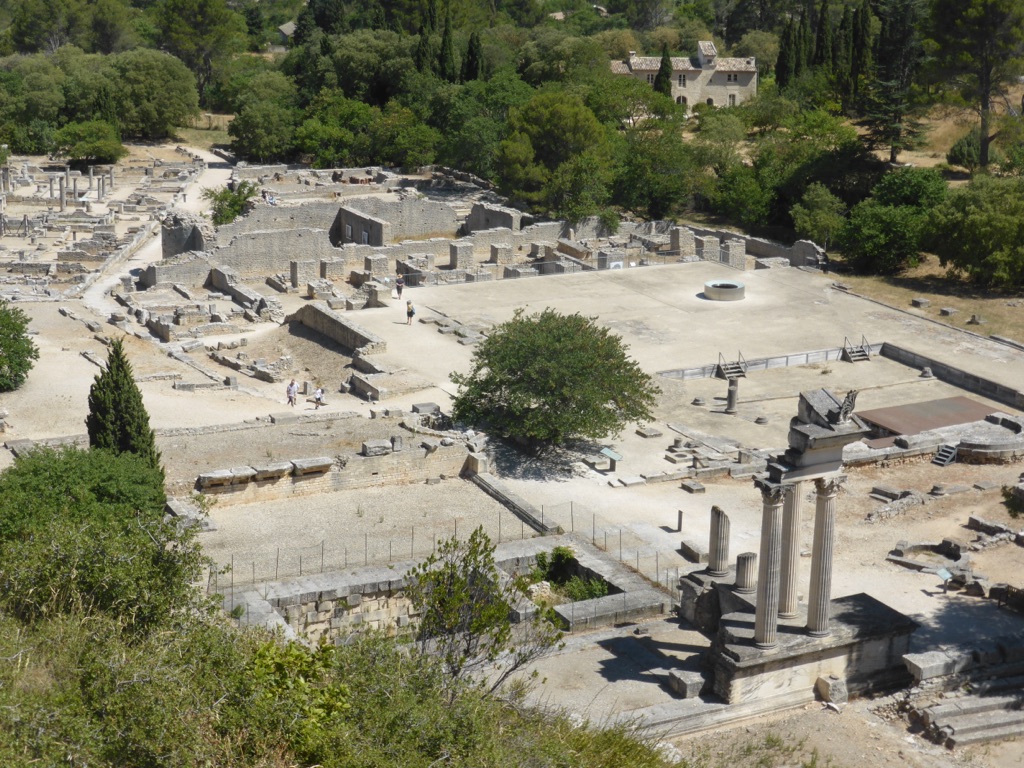Glanum was an ancient city near present-day Saint-Rémy-de-Provence in southern France. Founded by a Celto-Ligurian people known as the Salyens in the 6th century BCE, it became a prosperous city under Greek influence. Later, it flourished under Roman rule before being abandoned after the fall of the Roman Empire. Today, it’s renowned for its well-preserved ruins, including a triumphal arch, a mausoleum, and extensive residential areas that offer a glimpse into the past.
Ligurians
The Ligurians were an ancient people who inhabited the north-western region of Italy, parts of southeastern France, and Monaco, known in antiquity as Liguria. Their civilization’s timeline stretches back to the early Iron Age, around the 9th century BC, and they were known to the Greeks and Romans for their fierce independence and maritime skills. The Ligurians’ history is marked by their interactions and conflicts with expanding civilizations, notably the Etruscans, Greeks, and Romans.
One major moment in Ligurian history was their resistance against the Roman Republic. The Romans, in their quest for expansion, faced stiff resistance from the Ligurians, especially during the 2nd century BC. The Ligurians’ guerrilla tactics in their mountainous homeland made them formidable opponents. However, by the 1st century BC, Rome had largely subdued the Ligurians, incorporating their territory into the Roman Empire. This incorporation marked the beginning of the gradual Romanization of the Ligurian people and culture.
Religiously, the Ligurians practiced a form of animism, worshipping natural elements and forces. Little is known about their specific deities or religious practices, as they left no written records, and much of what is known comes from Roman and Greek sources. Their religion likely included rituals and ceremonies to honor the earth, sea, and sky, reflecting their deep connection to their rugged, coastal environment.
Socially, the Ligurians lived in small, scattered settlements rather than large, centralized cities. Their society was likely organized in tribal or clan-based systems, with a strong emphasis on family and community ties. Daily life for the Ligurians would have been primarily focused on agriculture, fishing, and hunting, with the rugged terrain of their homeland influencing their diet and lifestyle. They were also skilled sailors and traders, which allowed them to interact with other Mediterranean cultures.
There is little information on specific rulers, kings, or queens among the Ligurians, as their social organization did not favor centralized authority figures like those found in more stratified societies. Leadership was probably more communal or tribal, with leaders or elders chosen from among the people for their wisdom, experience, or martial prowess.
The Ligurians were from a region that offered both challenges and advantages. The mountainous landscape provided natural fortifications against invaders but also limited agricultural opportunities. Their coastal territories, however, offered abundant resources from the sea and opportunities for trade and contact with other Mediterranean cultures.
Wars and battles were a significant part of Ligurian history, especially their conflicts with the Romans. Before Roman conquest, they also likely engaged in skirmishes with neighboring peoples, including the Etruscans and Celts. Their martial culture was noted by ancient writers, who often portrayed them as fierce and valiant warriors.
In conclusion, the Ligurians were a resilient and independent people whose legacy is intertwined with the broader history of the Mediterranean. Their struggle against Roman expansion exemplifies their fierce desire for independence, and their eventual assimilation into the Roman Empire marks a significant chapter in the history of ancient Italy. Despite the scarcity of direct records, the Ligurians’ influence on the cultural and historical landscape of the region is undeniable.

